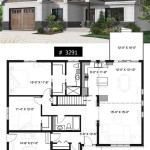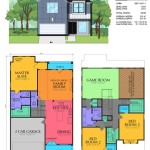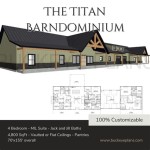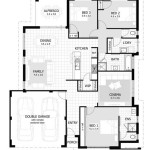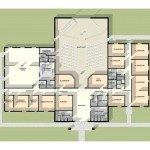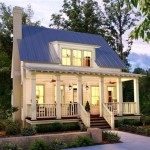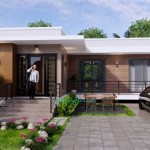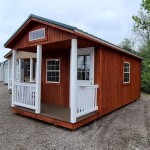Multi-Family Home Plans and Designs: Exploring Options for Investors and Families
Multi-family home plans and designs encompass a broad range of residential structures that house multiple separate living units within a single building or complex. These structures can range from duplexes and triplexes to apartment buildings and townhouses, each offering distinct advantages and considerations for owners, investors, and residents. Understanding the nuances of different multi-family home plans is crucial for making informed decisions about development, investment, and living arrangements.
The demand for multi-family housing is driven by various factors, including urbanization, affordability concerns, and evolving lifestyle preferences. As populations concentrate in urban centers, the need for efficient land use and diverse housing options increases. Multi-family developments often offer a more affordable alternative to single-family homes, making them attractive to a wider range of income levels. Furthermore, the flexibility and convenience of apartment living appeal to individuals and families seeking low-maintenance lifestyles and access to amenities and services.
Selecting the appropriate multi-family home plan depends heavily on factors such as the location, zoning regulations, target demographic, and financial considerations. A thorough feasibility study is essential to assess the market demand, construction costs, potential rental income, and long-term profitability of a project. Careful planning and design are vital to ensure functionality, aesthetics, and compliance with building codes and accessibility standards.
Key Considerations in Multi-Family Home Design
Designing a successful multi-family home requires careful attention to several key aspects, each of which contributes to the overall functionality, livability, and profitability of the development.
Unit Mix and Layout: The unit mix, which refers to the proportion of different unit types (e.g., studios, one-bedroom, two-bedroom, three-bedroom apartments), should be carefully considered based on the target demographic and market demand. Factors such as the average household size, income levels, and lifestyle preferences in the area should inform the decision-making process. The layout of each unit should prioritize efficient use of space, functionality, and natural light. Considerations such as open-concept living areas, ample storage, and private outdoor spaces can enhance the appeal and livability of the units.
Shared Amenities and Common Areas: Multi-family homes often include shared amenities and common areas designed to enhance the quality of life for residents and foster a sense of community. These amenities can range from basic features such as laundry rooms and parking facilities to more elaborate offerings like fitness centers, swimming pools, clubhouses, and outdoor recreation areas. The design and placement of these amenities should be carefully considered to maximize their usability and appeal to residents. Well-maintained common areas contribute to the overall aesthetic appeal of the property and enhance its desirability.
Soundproofing and Privacy: One of the key challenges in multi-family home design is ensuring adequate soundproofing and privacy between units. Noise transmission can be a significant source of complaints and dissatisfaction among residents. Implementing effective soundproofing measures, such as using dense insulation materials, staggered stud walls, and resilient channels, can significantly reduce noise transfer between units. Careful attention should also be paid to the placement of windows and doors to minimize noise intrusion. Additionally, providing private outdoor spaces, such as balconies or patios, can enhance the sense of privacy and create a more comfortable living environment.
Types of Multi-Family Home Plans
The category of multi-family homes encompasses a diverse range of architectural styles and configurations, each suited to different locations, target markets, and development goals. Understanding these different types can help inform the selection of the most appropriate plan for a specific project.
Duplexes and Triplexes: Duplexes and triplexes are among the simplest forms of multi-family housing, consisting of two or three separate living units within a single building. These structures often resemble single-family homes, blending seamlessly into residential neighborhoods. Duplexes and triplexes can be an attractive option for homeowners looking to generate rental income by living in one unit and renting out the others, or for investors seeking to acquire smaller multi-family properties. The design of duplexes and triplexes typically prioritizes privacy and independence for each unit, with separate entrances and outdoor spaces.
Townhouses: Townhouses are multi-family dwellings that are typically arranged in rows or clusters, with each unit having its own private entrance and often a small yard or patio. Townhouses offer a greater sense of privacy and ownership compared to apartments, while still providing the benefits of shared amenities and maintenance. Townhouse developments are often found in suburban areas and can be an attractive option for families and individuals seeking a balance between privacy and community.
Apartment Buildings: Apartment buildings represent the most common form of multi-family housing, ranging in size from smaller buildings with a few units to large complexes with hundreds of units. Apartment buildings can be either garden-style, with units spread across multiple low-rise buildings, or high-rise, with units stacked vertically in a tall building. Apartment buildings typically offer a range of amenities and services, such as on-site management, maintenance, and recreational facilities. The design of apartment buildings prioritizes efficiency and density, maximizing the number of units that can be accommodated on a given site. Apartment buildings are often located in urban centers and cater to a diverse range of residents, including students, young professionals, and families.
Design Considerations for Different Target Demographics
The design of a multi-family home should be tailored to the specific needs and preferences of the target demographic. Different groups of residents have different priorities and lifestyle requirements, and understanding these differences is crucial for creating a successful and desirable development.
Student Housing: Student housing developments typically prioritize affordability, convenience, and social interaction. Unit sizes are often smaller, focusing on providing a comfortable and functional living space for students. Shared amenities such as study lounges, computer labs, and recreational areas are essential for fostering a sense of community and supporting academic success. Proximity to campus and access to public transportation are also important considerations.
Senior Housing: Senior housing developments are designed to cater to the unique needs of older adults, focusing on accessibility, safety, and comfort. Unit layouts should be designed to minimize hazards and maximize ease of movement. Features such as grab bars, roll-in showers, and wider doorways are essential for accommodating residents with mobility limitations. Shared amenities such as community rooms, fitness centers, and outdoor walking paths can promote social interaction and physical activity. Proximity to healthcare facilities and supportive services is also important.
Family Housing: Family housing developments should prioritize space, functionality, and child-friendliness. Unit sizes should be larger to accommodate families with children, and layouts should include features such as multiple bedrooms, ample storage, and durable finishes. Shared amenities such as playgrounds, parks, and community centers can provide opportunities for children to play and interact. Proximity to schools, parks, and other family-friendly amenities is also important.
Sustainability and Energy Efficiency in Multi-Family Home Design
In today's environment, sustainability and energy efficiency are becoming increasingly important considerations in multi-family home design. Incorporating sustainable design principles can reduce the environmental impact of the development, lower operating costs, and enhance the appeal to environmentally conscious residents.
Energy-Efficient Building Materials: Selecting energy-efficient building materials, such as high-performance windows, insulated siding, and Energy Star-rated appliances, can significantly reduce energy consumption and lower utility bills. Using recycled and renewable materials can also minimize the environmental impact of the construction process.
Water Conservation Measures: Implementing water conservation measures, such as low-flow toilets, showerheads, and faucets, can reduce water consumption and lower water bills. Installing rainwater harvesting systems for irrigation and graywater recycling systems for non-potable uses can further reduce the demand for potable water.
Renewable Energy Systems: Incorporating renewable energy systems, such as solar panels and geothermal heating and cooling, can reduce reliance on fossil fuels and lower carbon emissions. These systems can also provide long-term cost savings and enhance the marketability of the property.
By carefully considering these factors and incorporating sustainable design principles, multi-family home developers can create communities that are both environmentally responsible and economically viable.
Multi Family House Plan Not A Fan Of The Dated Exterior But I Like Concept Plans Duplex

Plan 69111am Hillside Multi Family Home In 2024 House Plans Homes

6 Unit Modern Multi Family Home Plan 21603dr Architectural Designs House Plans

Builder Preferred 5 Plex Modern Style House Plan 9086

Multi Family Plan 6865

Multi Family Plan 73483 Ranch Style With 3433 Sq Ft 5 Bed 3 B

Fordyce Crest Multi Family Home House Plans Duplex Floor And More

Plan 75731 Modern Style With 3 Bed Bath 1 Car Garage

Multi Family Plan 64952 Victorian Style With 7624 Sq Ft 16 Bed

Multi Family House Plan Camden Plans Duplex Design

